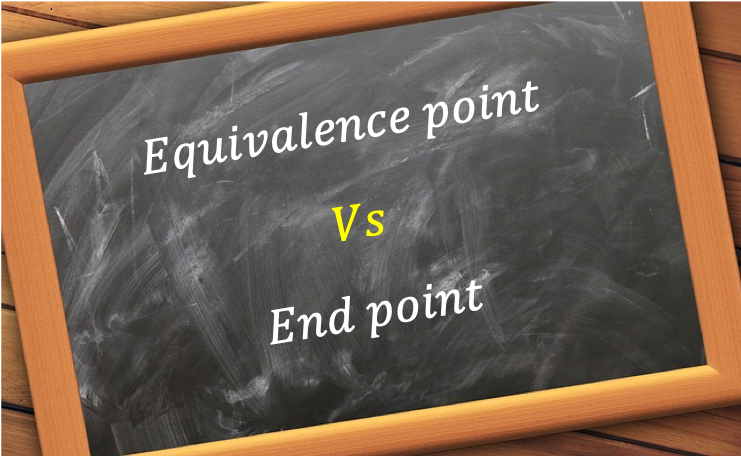What is the difference between equivalence point and end point?

The equivalence point (also known as stoichiometric point) is a theoretical point during titration where the number of moles of an analyte is stoichiometrically equal to the number of moles of a solution of known concentration. For example, in the titration of 0.1 M HCl with 20 cm3 of 0.2 M NaOH, the equivalence point is when 40 cm3 of the acid is added to the base.
The end point, however, is the point during titration when a colour change of the solution in the flask is estimated by the person performing the titration. It may not coincide with the equivalence point. Even when instruments like colorimeters are used, the end point may not be exactly equal to the equivalence point due to a limit in the sensitivity of the instrument. However, the deviation between the end point and the equivalence point of a titration is usually very small and does not affect calculations significantly, whether the point is recorded through human observation or by a machine.
